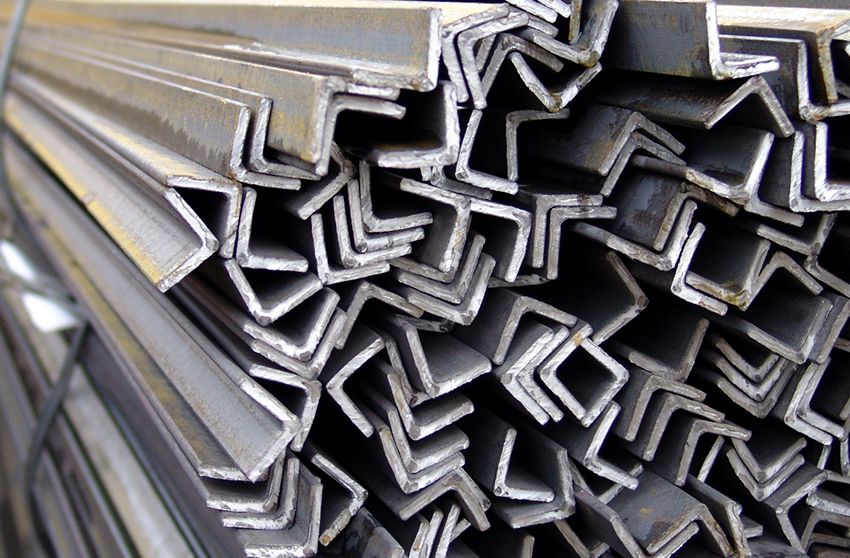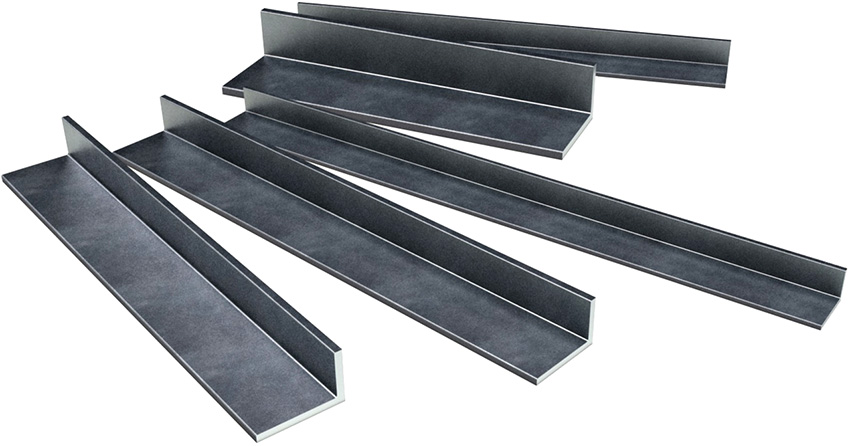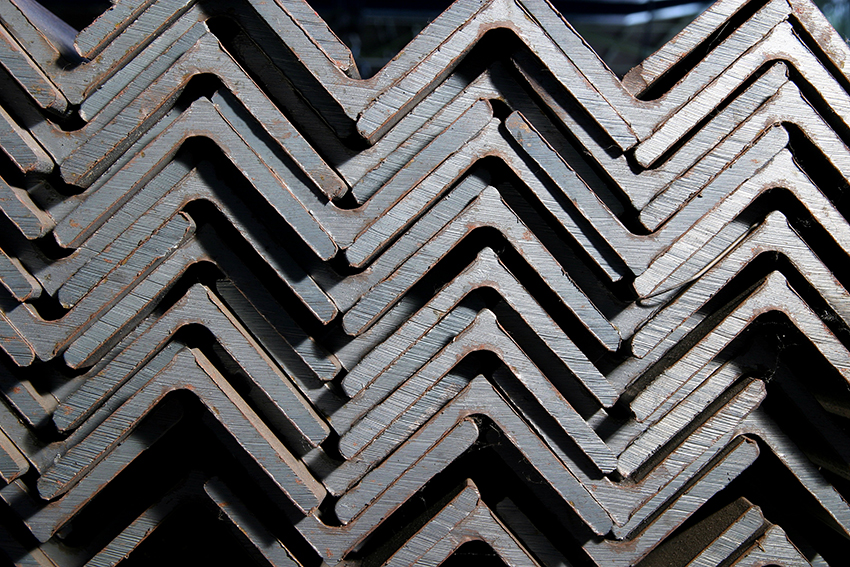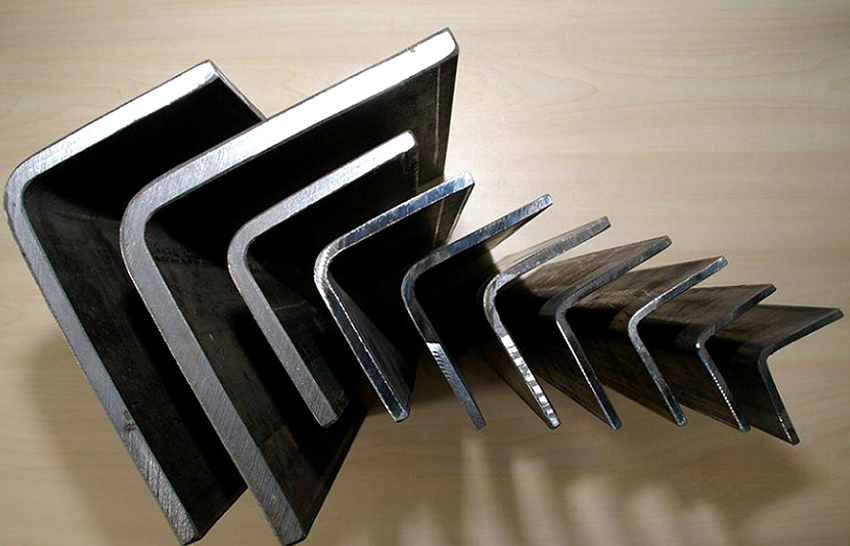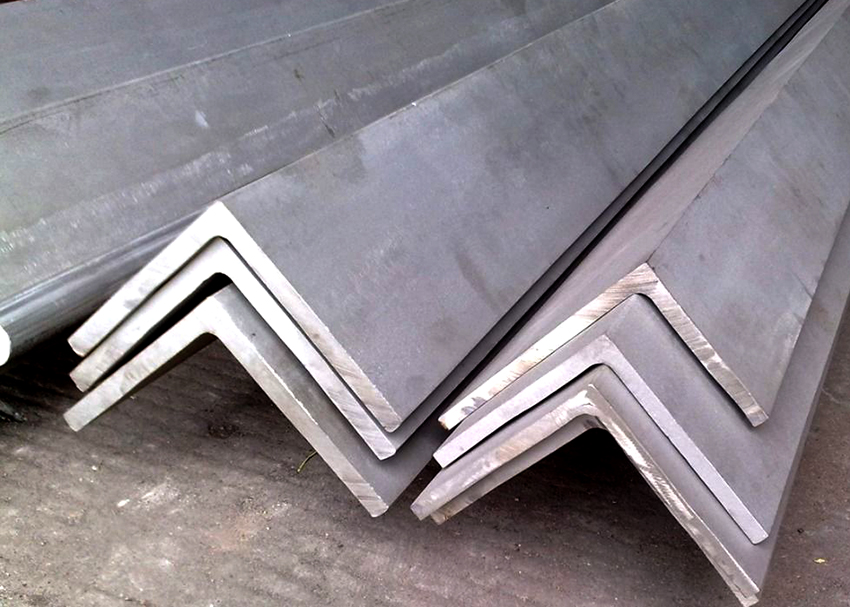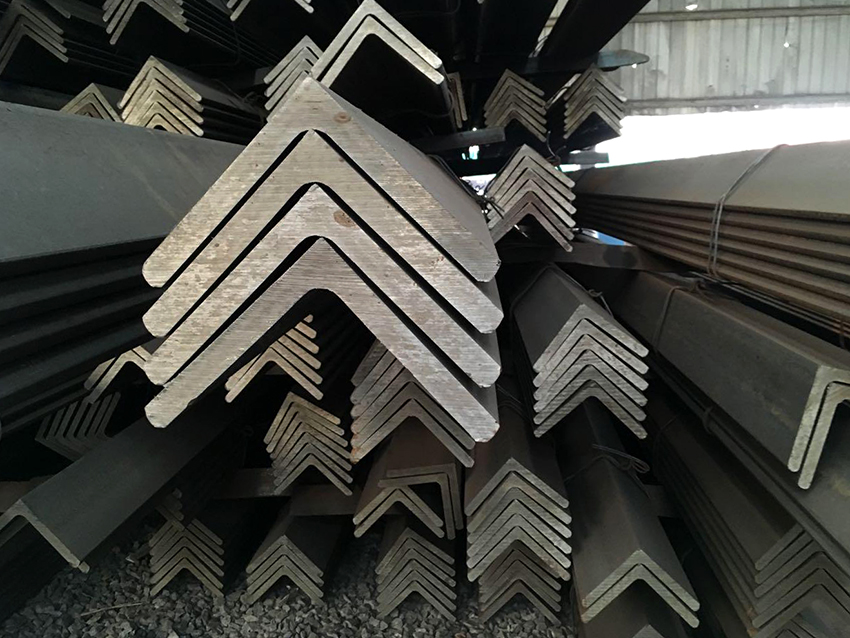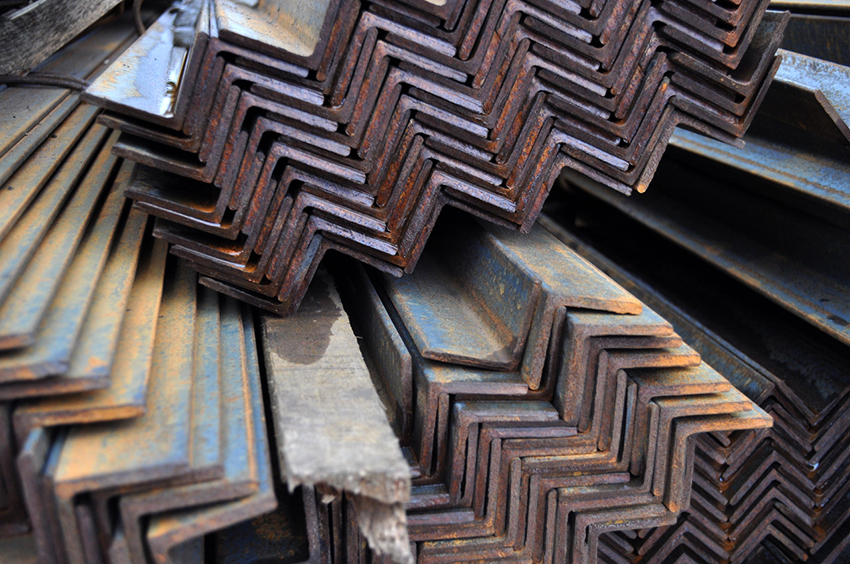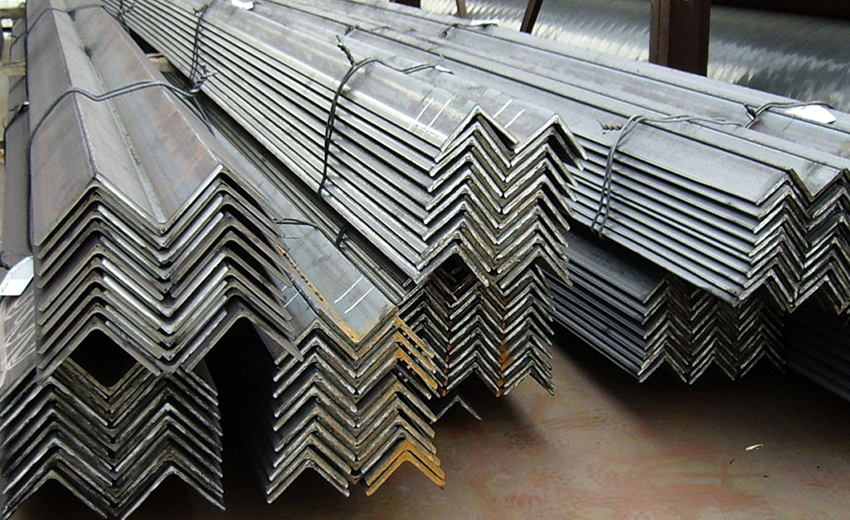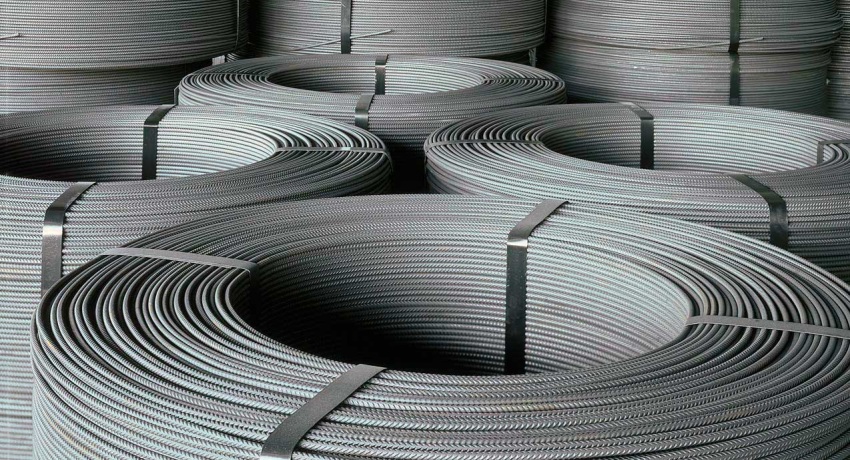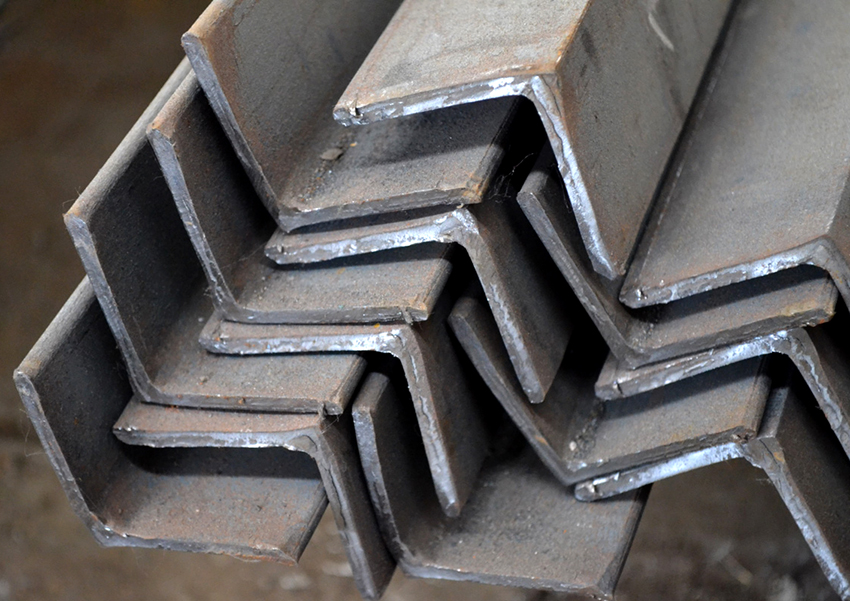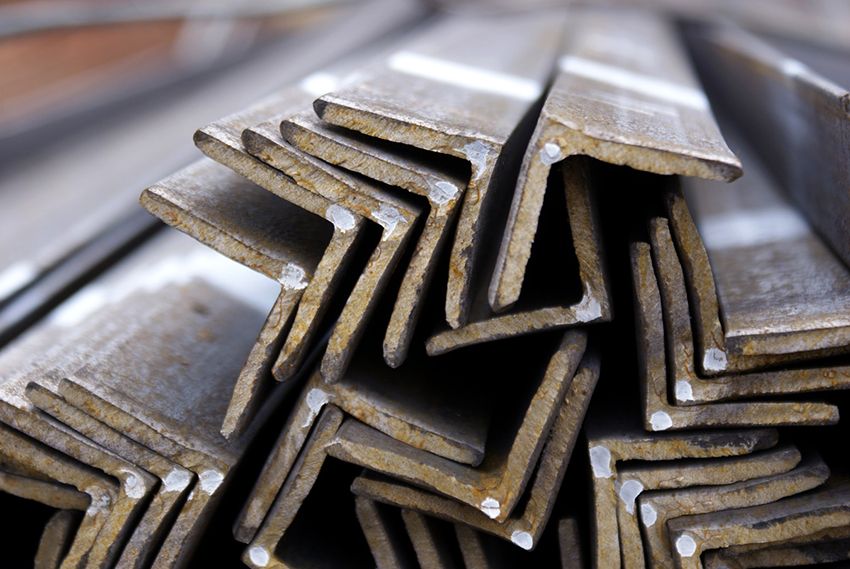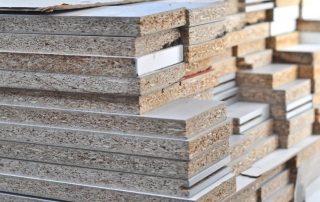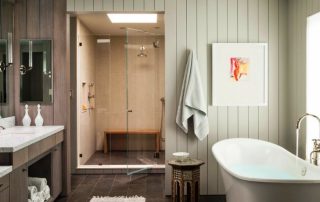The steel corner is one of the most common types of rolled metal. Before starting construction, regardless of its volume, as well as when ordering these products, it becomes necessary to determine the mass of the batch. Today there are several ways to calculate the weight of a corner. The weight of the product depends on its type and the thickness of the sides.

Steel corner - one of the most demanded varieties of rolled metal
Content [Hide]
- 1 Varieties of steel corners and their features
- 2 Corner weight: nuances of determining the mass of a running meter
- 3 How to independently determine the weight of a 50 mm corner and other product types?
- 4 Corner weight calculation: tables of state standards
- 5 Using an online weight calculator
- 6 How to calculate the weight of 1 meter of a corner 100x100x7 mm: instruction
- 6.1 Calculation of the weight of the corner 75x75x5 (per meter): quick methods of determination
- 6.2 Calculation of the weight of 1 meter of a corner 63x63x5 mm: recommendations
- 6.3 Estimated weight of the corner 50x50x5 per meter according to the state standard
- 6.4 How to determine the weight of a 40x40x4 corner (per meter) yourself?
Varieties of steel corners and their features
Steel corners are classified according to the width of the sides. According to this indicator, all parts are divided into two types: equal and unequal. In the first case, the product has the same sides, and in the second, one of the sides prevails in width.
The weight of steel corners is a necessary parameter for construction and transport calculations. This indicator is influenced by many factors. First of all, the mass of parts belonging to this group of rolled metal products depends on the dimensions of the products. And also the method that was used in the production of these parts has a great influence on the value of weight.
Note! All products of this type are made in two ways. The first of them involves rolling the primary blanks through special shafts that form the part. This method is called hot-rolled, since the products are heated to the required temperature before forming. The second method of making steel corners is bending. For its implementation, special roll forming equipment is used.
In order to determine the weight of the metal corner, you must first find the mass of 1 meter of the product. This calculation is performed using two indicators: cross-sectional area and specific gravity. These values need to be multiplied. Each of the standard sizes of steel parts has its own specific gravity, which is determined in different ways. Another common method for finding this parameter is with the help of special tables, which can be found in the corresponding GOSTs.
The last way to quickly determine the mass of 1 running.m of steel part (for example, corner weight 75x75x6 mm) - online calculator. This is a special program that calculates using a formula inscribed in its code. To determine the required value, you need to enter the data in the appropriate cells - and the online calculator will perform the calculation itself.
Corner weight: nuances of determining the mass of a running meter
Manufacturers engaged in the production of this type of rolled metal products are required to comply with the requirements and standards prescribed in the relevant GOSTs. It is important to note that the tables that can be found in the regulatory documentation indicate the theoretical mass of 1 linear. m details. In turn, the calculated weight is a value that is almost impossible to obtain.
There is only one way to find the actual weight of the product - weighing, which is not very convenient. The most common type of product has two sides, which are 50 mm wide. The weight of the corner 50x50x4 per meter can be calculated independently or you can use a special program for this.
It should also be understood that the average values of the density of the metal are used for calculations. For products made of steel, a constant value of 7850 kg / m³ applies. However, there are currently many grades of steel, each of which has an individual density index that differs from the rest. Thus, the calculation of the weight of a batch of corners is carried out using averaged values, which is reflected in the final figure.
Among other things, steel corners can have different accuracy classes (A, B, C). Permissible discrepancies with the accepted dimensions specified in GOST also affect the calculation of the mass. This leads to the following conclusion: the regulatory documentation contains information on the specific gravity, which, as a rule, does not correspond to the actual one. Nevertheless, GOSTs are relied on when carrying out all the necessary calculations. Manufacturers are also guided by this documentation.
Self-calculation is often necessary when installing various fences and frame structures with your own hands. In this case, a special place is given to the product, which has the following geometric indicators: 50, 50, 5. It is recommended to search for the weight of this type of corner using tables that are indicated in the regulatory documentation.
Helpful information! The production of steel corners takes into account the percentage of scrap, which in any case is formed during the manufacturing process. Unscrupulous manufacturers deliberately reduce the wall thickness, making the product more susceptible to stress. In the case of purchasing a low-quality product and when calculating it, the final figure will greatly differ from the actual weight of the product. This is especially true for the calculations of large parties.
How to independently determine the weight of a 50 mm corner and other product types?
The exact weight of this type of steel product can only be determined by weighing. However, this method is not always convenient. To find the estimated mass of a batch of corners, you must first calculate the weight of 1 meter. The easiest way is to use special tables that contain data on all standard sizes of steel products of this type. First of all, you need to measure the width of the sides (shelves). And also it is necessary to determine the thickness of the same sides.
Using the above data, you can easily find the standard size you are interested in from the table and see the mass of 1 lin. m of the product (for example, the weight of the corner is 50x50 mm). Then it is required to divide the obtained theoretical mass by the density of steel, the average value of which is 7850 kg / m³. The next step is to multiply the result by the density of the steel grade.
If necessary, you can carry out an independent calculation completely.However, this calculation may not be accurate because it does not take into account the radii of the curvature between the sides. The process of self-calculation of the weight of a 63 mm corner (or any other) consists of several stages.
The first step is to determine the sectional area of the part. To do this, you will need to measure the length of one side (shelf) and multiply the resulting figure by the thickness. Further, the thickness of the product must be subtracted from the length of the second side, after which the resulting number is multiplied by the thickness. This is how the cross-sectional area of one and the other sides is determined.
After calculating the area of the sides, you need to add these two indicators. The result is the total theoretical sectional area of the angle steel. It remains only to multiply this value by the density and 1 m. Thus, the theoretical weight of 1 m of the steel part is determined.
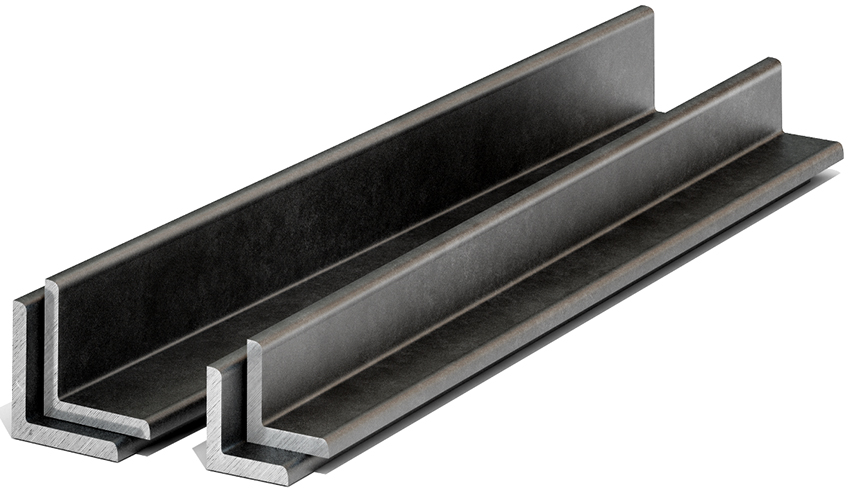
You can determine the weight of the corner yourself, but the calculation may turn out to be inaccurate
Corner weight calculation: tables of state standards
The tabular method for determining the mass of 1 m of a steel part is the most popular. This is due to the fact that these diagrams contain ready-made data that were calculated specifically for the convenience of using the values. Similar tables can be easily found on the Internet. They are part of the regulatory documentation (GOST).
Note! There is a separate standard for each type of steel rolled metal.
Such tables are used when you need to quickly determine the mass of a small or large batch of corners. In order to find the total weight, it is necessary to take a value that corresponds to a mass of 1 linear meter. m of steel part, and multiply this figure by the total footage. Thus, the decisive role is played by the weight of 1 meter of the corner. The table allows you to find this theoretical value without wasting time and effort. Such schemes allow reverse calculation. For example, if a person knows the mass of a batch of steel corners, then using this data it is possible to determine the total length of all products.
Weight table 1 rm. m of steel corners with different standard sizes:
| Dimensions, mm | Specific gravity 1 running m (kg) |
| 40x40x3 | 1,846 |
| 50x50x6 | 4,467 |
| 63x63x4 | 3,896 |
| 70x70x7 | 7,392 |
| 75x75x7 | 7,964 |
| 100x100x10 | 15,1 |
| 40x40x4 | 2,419 |
| 50x50x5 | 3,769 |
| 70x70x8 | 8,373 |
| 50x50x3 | 2,324 |
| 40x40x5 | 2,976 |
| 70x70x5 | 5,382 |
| 50x50x7 | 5,150 |
| 75x75x9 | 10,07 |
| 63x63x5 | 4,814 |
| 100x100x7 | 10,76 |
| 63x63x6 | 5,717 |
| 100x100x12 | 17,9 |
GOSTs contain tables that indicate more data. This increases the accuracy of the calculation. For example, in the regulatory documents, you can find the specific gravity of various grades of steel.
Using an online weight calculator
A special online calculator is programmed to find the weight of one product. After obtaining the desired value, it becomes possible to carry out further calculations. The online calculator can be found on the Internet using the search bar of your browser. This method allows you to quickly and with high accuracy calculate the required weight of 50x50x4 mm corners and other popular types of rolled metal.
In order to perform the calculation, you will need to enter the dimensions of the part in the appropriate cells. You need to know the length of the product, as well as the thickness of the shelves, the width of the corner and its height. For maximum accuracy, it is recommended to specify the steel grade from which the part is made.
This program makes an automatic calculation using a special formula. This equation has the following form: m = ρ * S * (A + B - S) * L, where: ρ is an indicator of steel density; S is the wall thickness; A and B are the dimensions of the shelves; L is the length of the product.
Note! It is important to remember that the weight of the angle 75, 50 mm (or any other) is a value that is primarily a reference. Thus, the online calculator first synchronizes with the tables located in state standards, and only then calculates the required parameter using the formula.
In most cases, the data to be driven in can be easily found in special tables.Most often, the mass of products is calculated, which are very popular due to the many applications. If the calculator does not find the required part in the table, then it is necessary to calculate using the formula.
How to calculate the weight of 1 meter of a corner 100x100x7 mm: instruction
The corners are made in accordance with the requirements of GOST. In the process of their production, possible deviations are taken into account, which are also spelled out in the corresponding regulatory documentation. To calculate a corner having dimensions of 100x100x7 mm, the easiest way is to refer to a special table. In GOST, which regulates equal products, the mass of 1 m of this product is 10.79 kg.
It is important to remember that for the correct calculation of the mass, it is necessary to accurately determine the wall thickness of the product, otherwise the final value will be incorrect. Parts with such dimensions can have different thicknesses. For example, the weight of a corner 100x100x8 mm will be greater than that of a product whose thickness is 7 mm.
There are tables that contain information not only about the theoretical mass of 1 lin. m of products, but also about how many meters are contained in 1 ton of steel. Calculations in such tables are made taking into account the norms of state standards. The document regulating equilateral steel products is GOST 8509-93.
Steel rolled metal products are very popular, the width of the shelves of which is 100 mm, and the thickness is 8 mm. The weight of 1 meter of a 100x100x8 corner is 12.25 kg.
Unequal products also have corresponding standard documentation, which contains tables with all the necessary data. For greater accuracy, you can determine the mass yourself using the appropriate formula. The equation in this case looks as follows: ru = [(A + B - t) * t + (1 - π / 4) * (r² internal - 2 * r² external)] * ρ, where: t - side thickness indicator; A - shelf width (large); B - shelf width (small); ρ is the density of steel; inner r - radius of inner curvature of the sides; outer r - radius of outer curvature.
When using the formula, it is recommended to check the accuracy of the calculations several times. This is due to the fact that when calculating yourself, errors in numbers are often made.
Calculation of the weight of the corner 75x75x5 (per meter): quick methods of determination
The standard sizes of these products are prescribed in GOST, however, making ideal products in accordance with these standards is a rather complicated process. As a rule, finished products have certain errors. It is important that the deviation from the ideal size is within the limits specified in the state standards.
The weight of 1 meter of a corner 75x75x5 mm is a theoretical value, for which there are several ways. The simplest one is tabular. In addition, you can quickly find the required value using an online calculator. The weight of 1 m of a corner with such standard sizes is 5.8 kg. If necessary, you can perform an independent calculation of this indicator. The theoretical mass is calculated using a special formula.
Helpful information! For equilateral products, equations are used that are not suitable for determining 1 m of the mass of non-sided parts.
Using the above methods, you can find out the mass of products of the same width, but with different thickness indicators, for example, steel corners 75x75x6. The weight of 1 meter of these parts is 6.89 kg.
Related article:
Reinforcement: weight and length, ratio and calculations in construction work
Examples and the need for calculations, reference tables. The ratio of the length, weight and diameter of the rods. Application of the online calculator.
Calculation of the weight of 1 meter of a corner 63x63x5 mm: recommendations
Equal steel products with such dimensions are used for the installation of various engineering and construction elements. It is worth noting that the length of such parts according to GOST varies from 4 to 12 m. To calculate the theoretical weight of the product, the easiest way is to use the table.
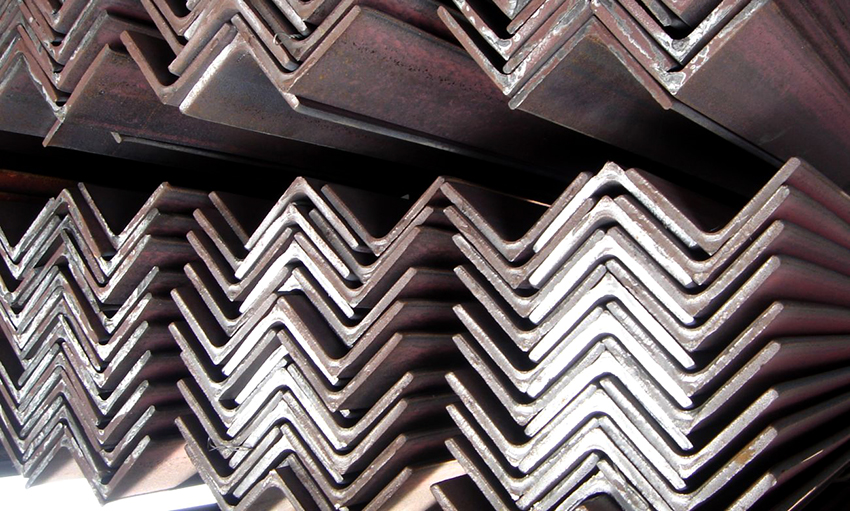
The weight of the product 63x63x5 mm per 1 m is 4.81 kg, thanks to this data, you can easily calculate the mass of the batch
The weight of the corner 63x63x5 (per meter) is 4.81 kg. Knowing this figure, it will not be difficult to determine the mass of the party. Corners of this size are used as independent building elements or as additional amplifiers for various structures. Many people use these products for the construction of fences in private plots.
You should know the weight of a corner with similar dimensions. This indicator allows you to calculate transport costs, as well as determine the number of parts required for the construction of a particular structure. As a rule, the actual weight of products of this type differs from the specific weight by about 5%. This is due to the fact that, in accordance with GOST, the width tolerance for a corner of 63x63x5 mm can reach 1.5 mm. Corner weight 63x63x5 mm is calculated very quickly if you use special documentation.
Estimated weight of the corner 50x50x5 per meter according to the state standard
In addition to standard data, which includes the specific weight of 1 m of the product, other indicators are used for calculations. The corner, the sides of which are 50 mm wide, is the most popular product today. Such dimensions contribute to the high versatility of this part.
In order to calculate the weight of 1 meter of a 50x50x5 mm corner, you need to familiarize yourself with GOST, which regulates this type of rolled metal. Like all of the above products, this corner belongs to the category of equilateral (or equilateral). It is used in the installation of fences, and is also common in furniture production. The use of such products allows you to make a perfectly even corner, which is a big plus when assembling cabinets and other pieces of furniture.
The maximum thickness of this part is only 5 mm. However, this product has good strength characteristics, which makes it possible to use them in engineering structures of varying degrees of complexity. The weight of the corner 50x50x5 mm is 3.769 kg (1 m).
Note! The ton contains 265.25 m of steel products with similar dimensions. Knowing this value, you can easily calculate their number, as well as calculate the total mass of the batch.
The length of such parts may vary. The range of length is in the range from 4 to 12 m. These are standard indicators that can be compared with almost any kind of equilateral rolled metal.
State documents are used not only to determine the weight of 1 meter of a 50x50x5 corner. GOST contains all the necessary data, including possible deviations from the norms. This information includes the accuracy class, as well as the steel grades existing and approved in the modern industry.
The corners, the sides of which are 50 mm wide, can have a different thickness. For example, products in which this indicator is 4 mm are popular. The weight of 1 meter of a corner 50x50x4 mm is 3.05 kg.
How to determine the weight of a 40x40x4 corner (per meter) yourself?
The theoretical weight of products with shelves 40 mm wide is determined in the same way. To find this value, you need to refer to the table containing data on the dimensions of the products, and select the desired corner option. Such a diagram contains nominal weights.
The weight of 1 meter of a corner 40x40x4 mm, in accordance with the tables in GOST, is 2.42 kg.Experts recommend checking the thickness of products before starting calculations. This is due to the fact that at present there are several modifications of the corners of such dimensions, which have different thickness of the shelves. Visually, it is very easy to confuse a part with a thickness of 4 mm and, for example, 3 mm.
The corner, the wall thickness of which is 3 mm, has a weight of 1.85 kg per 1 m. The most common length of such a part is 6 m. It should be noted that at the request of the customer, the length may go beyond the standard framework of 4-12 m. For calculation angle weight 40x40x4 mm using an online calculator, it is necessary to clarify the steel grade.
The operational scope of parts with similar dimensions is wide enough. They are used in the economic and construction fields. Such corners are used to organize spacers, as well as when assembling lightweight frame structures. Some types of fasteners also cannot do without the use of steel parts with 40 mm shelves. There are 413.22 m of forty-millimeter products in 1 ton.
Steel corners are irreplaceable building materials that are used for the installation of frame structures. Parts with a small mass are actively used in the furniture industry, and are also used for household purposes. Calculation of the mass of steel products is a necessary measure that allows you to determine the conditions of transportation and construction nuances. To calculate the weight, you can use a tabular method, an online calculator, or you can perform all the actions yourself using special formulas.
